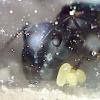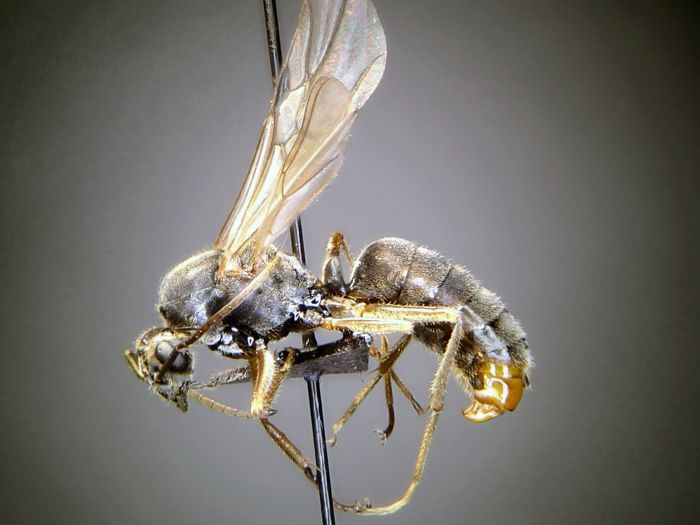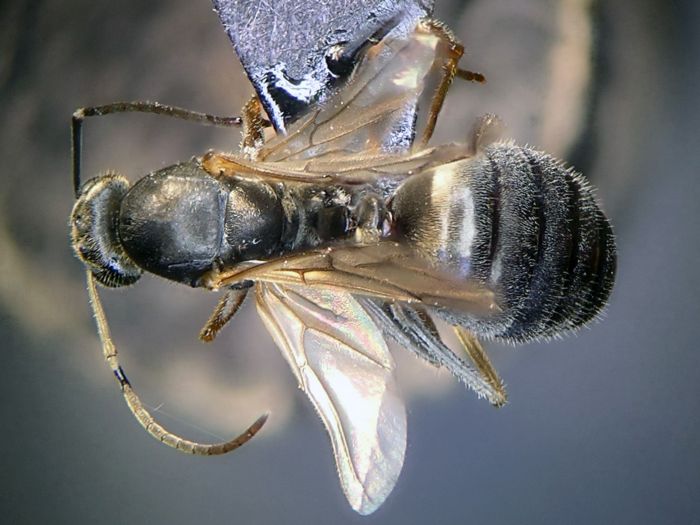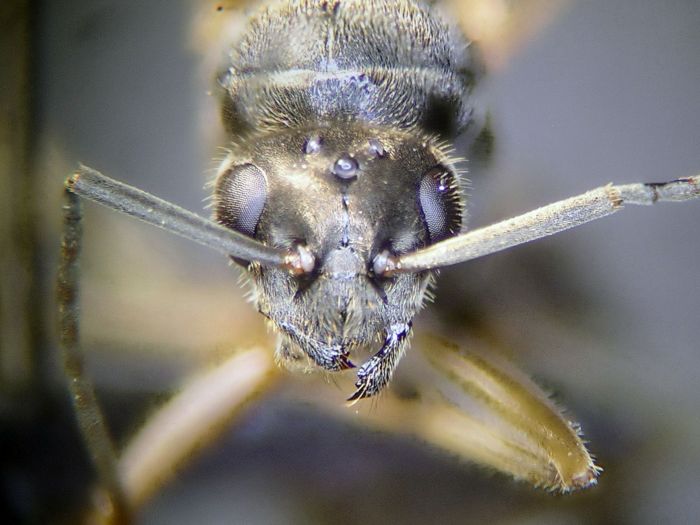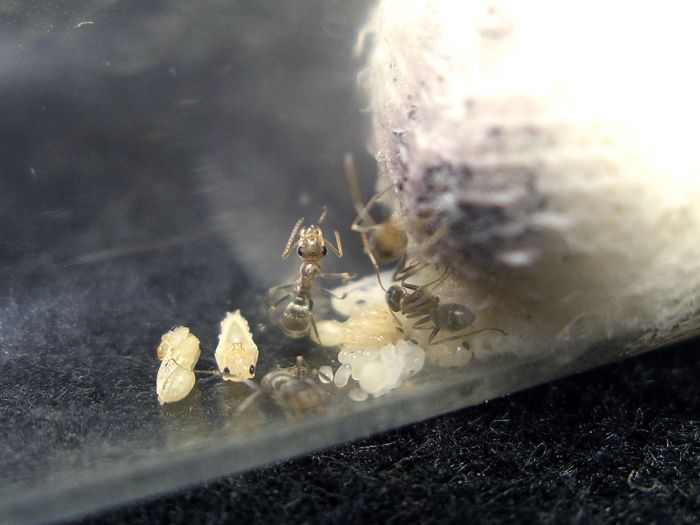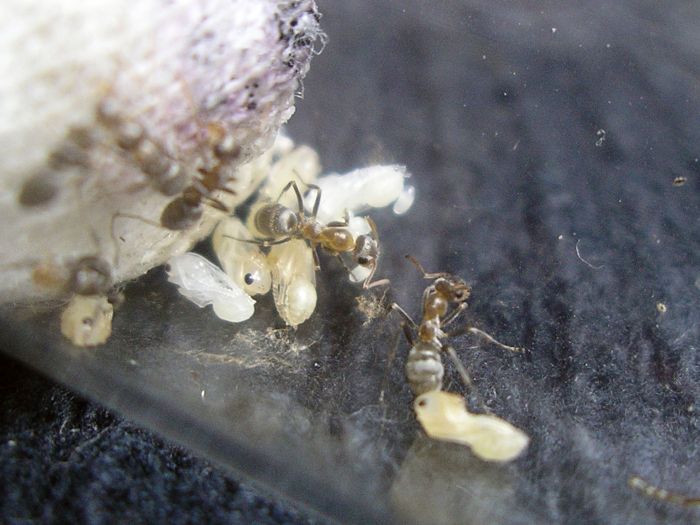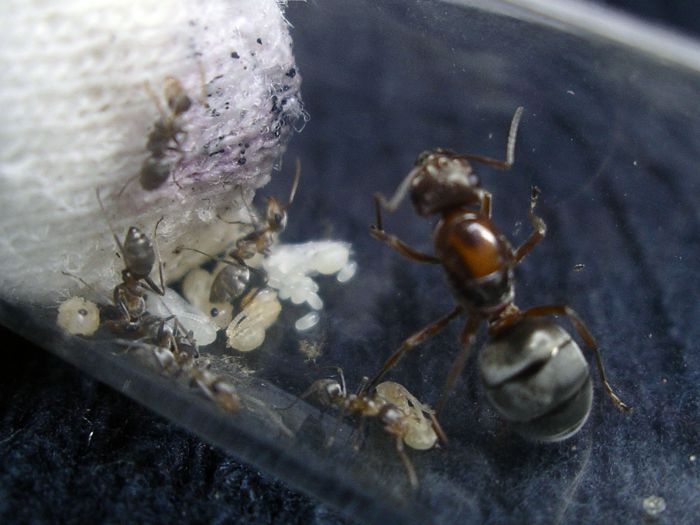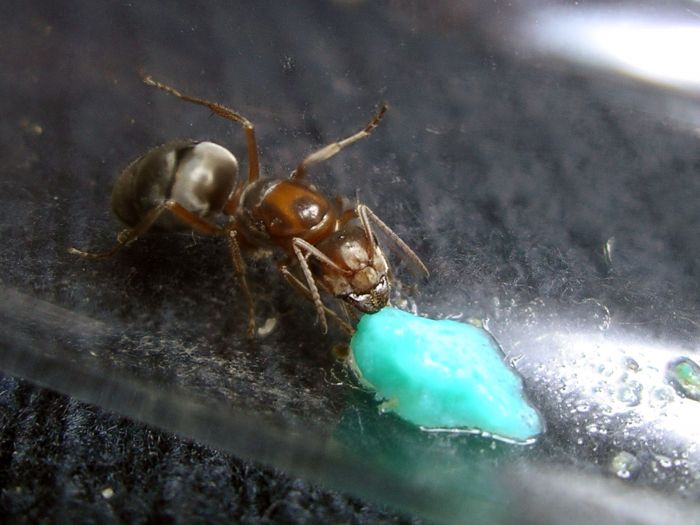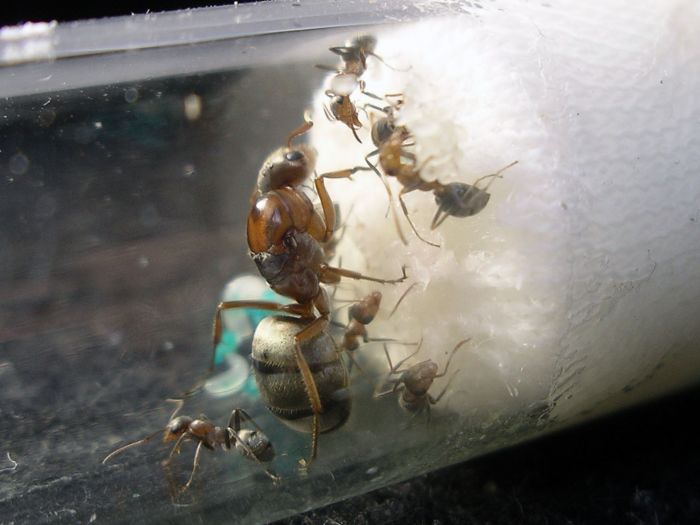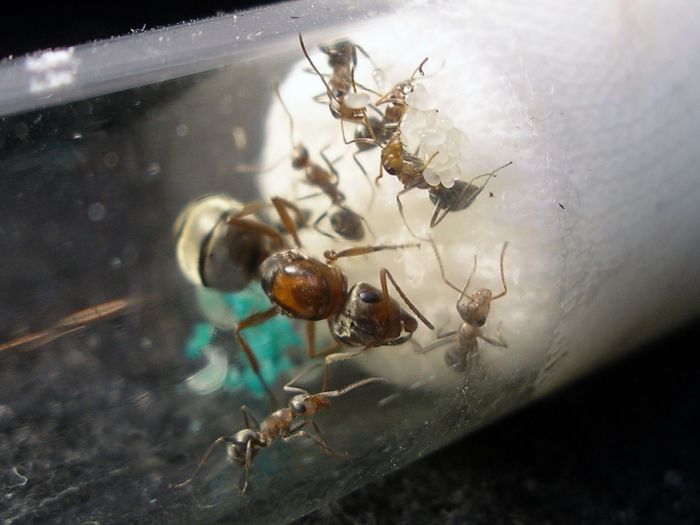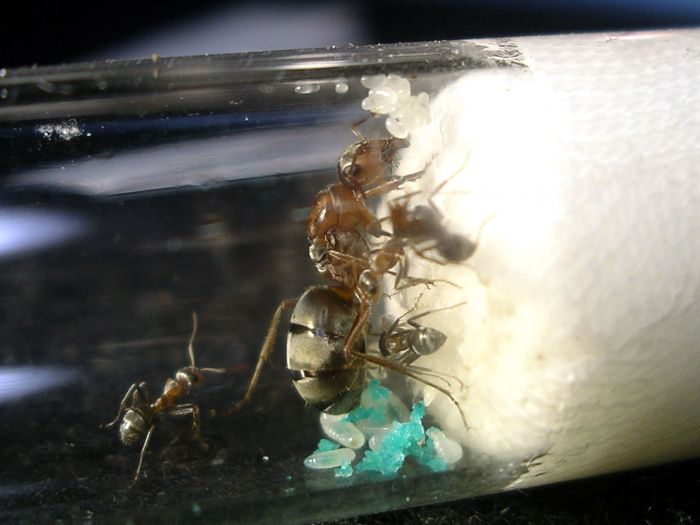I got one Formica francoeuri queen from Chromerust, who found it on April 4th 2015 in Riverside, California, and I found the other two close to Wrightwood, California, just off Lone Pine Canyon Road on April 28th, 2015.
One of the queens I got from Wrightwood I found just running around, while the other I found under a rock.
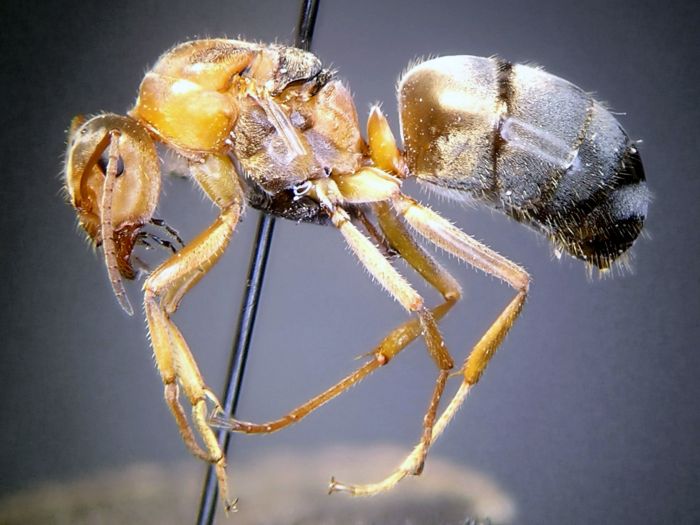
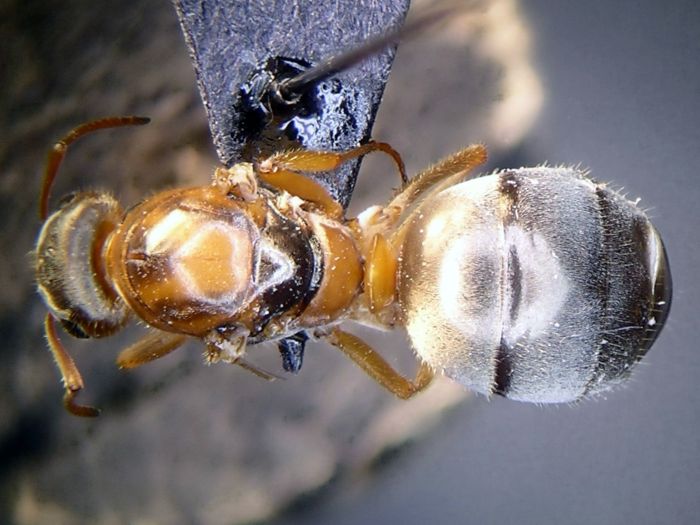
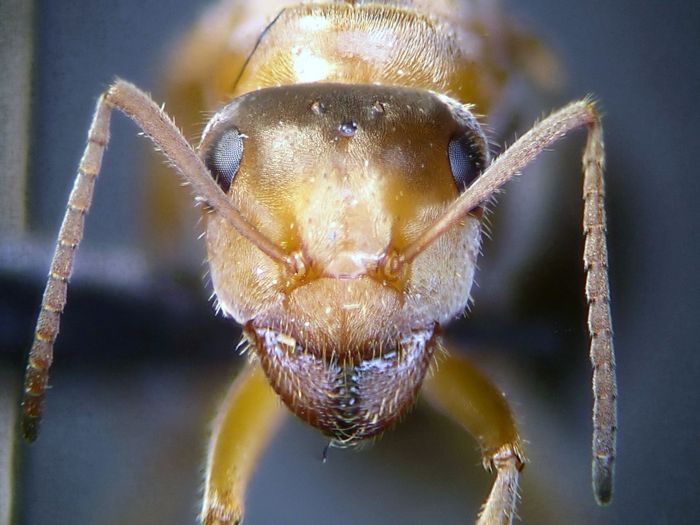
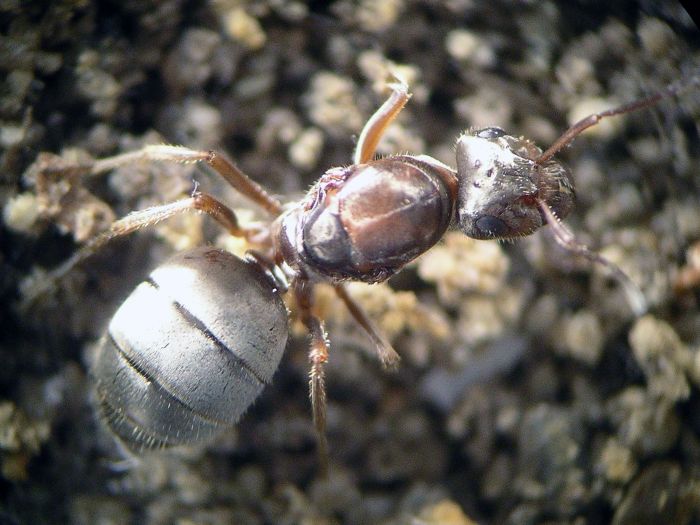
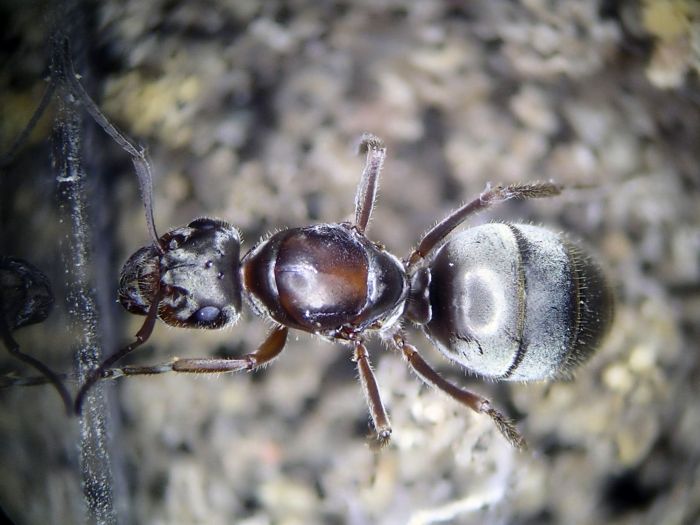
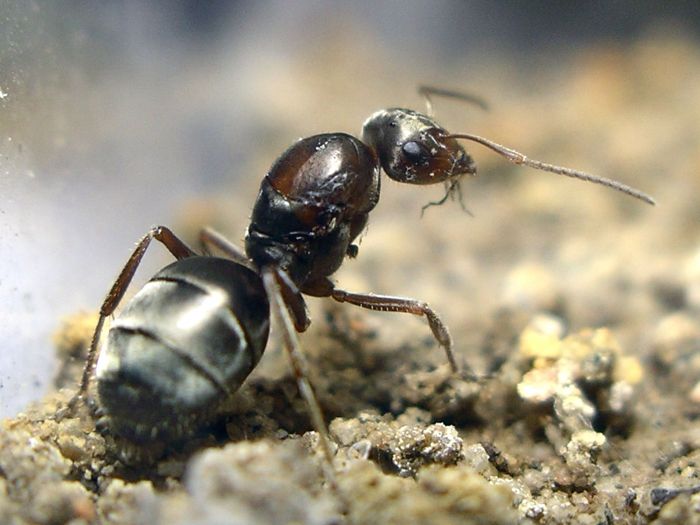
The queen I got from Chromerust I put in a test tube, and it seems to be a dud. It doesn't want to do anything like dig a nest or lay eggs.
As for the Wrightwood queens, I putone in a test tube, and the other in one of my small ant farm boxes.
I boosted all three queens with some brood I found in a colony nesting underneath a rock.
The brood in the ant farm box was starting to mold because it was so wet, so I put a fan on it to dry it out. To make sure the queen didn't dry out and die, I put a liquid feeder in with her. Apparently she was able to reach the hole in the lid from the top of the liquid feeder, because this morning she was nowhere to be found. This means I probably have a Formica francoeuri queen starting a colony somewhere in my kitchen...
The remaining Wrightwood queen seems to be doing alright in her test tube, and has already laid a decent sized pile of eggs.





